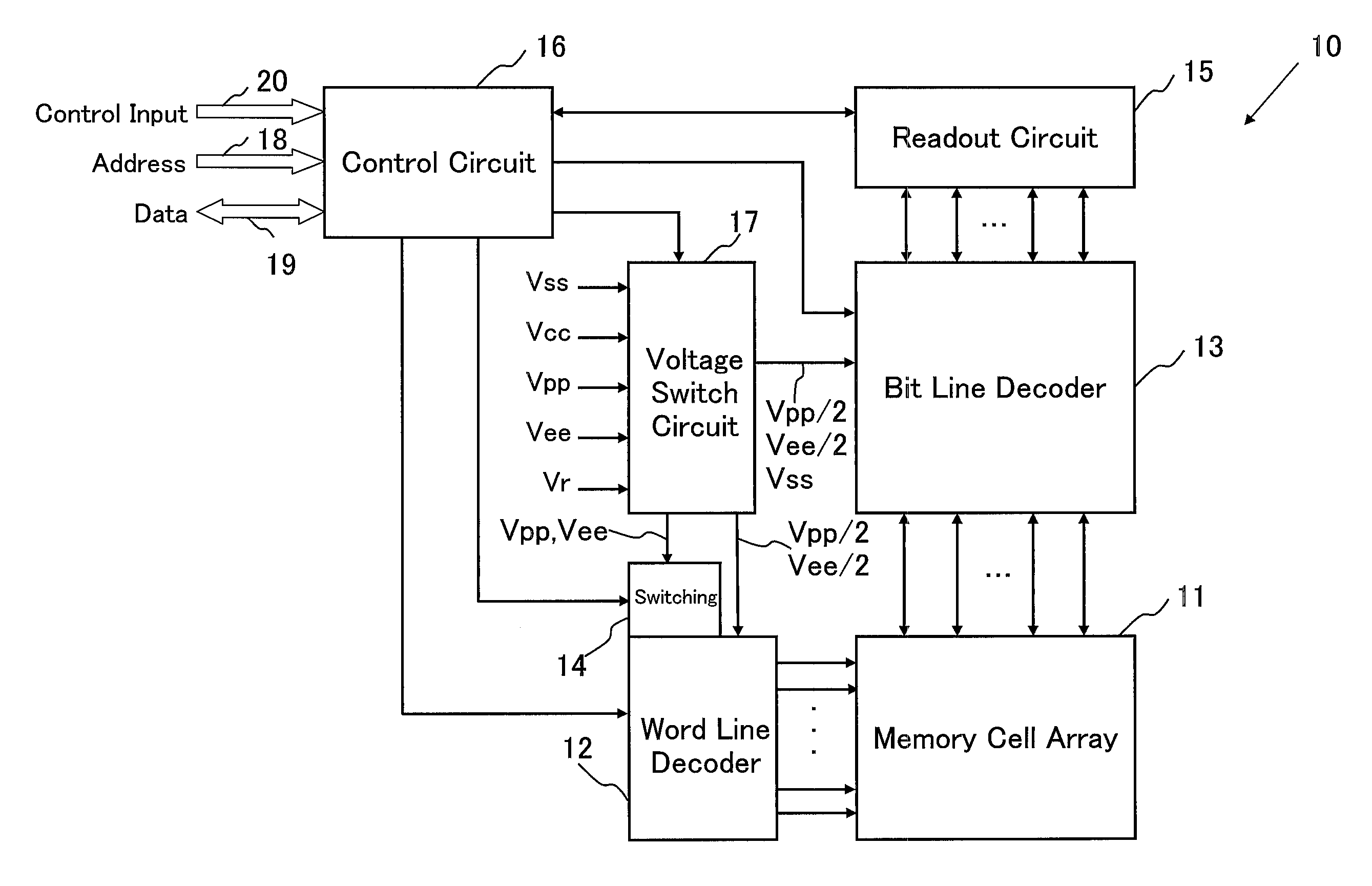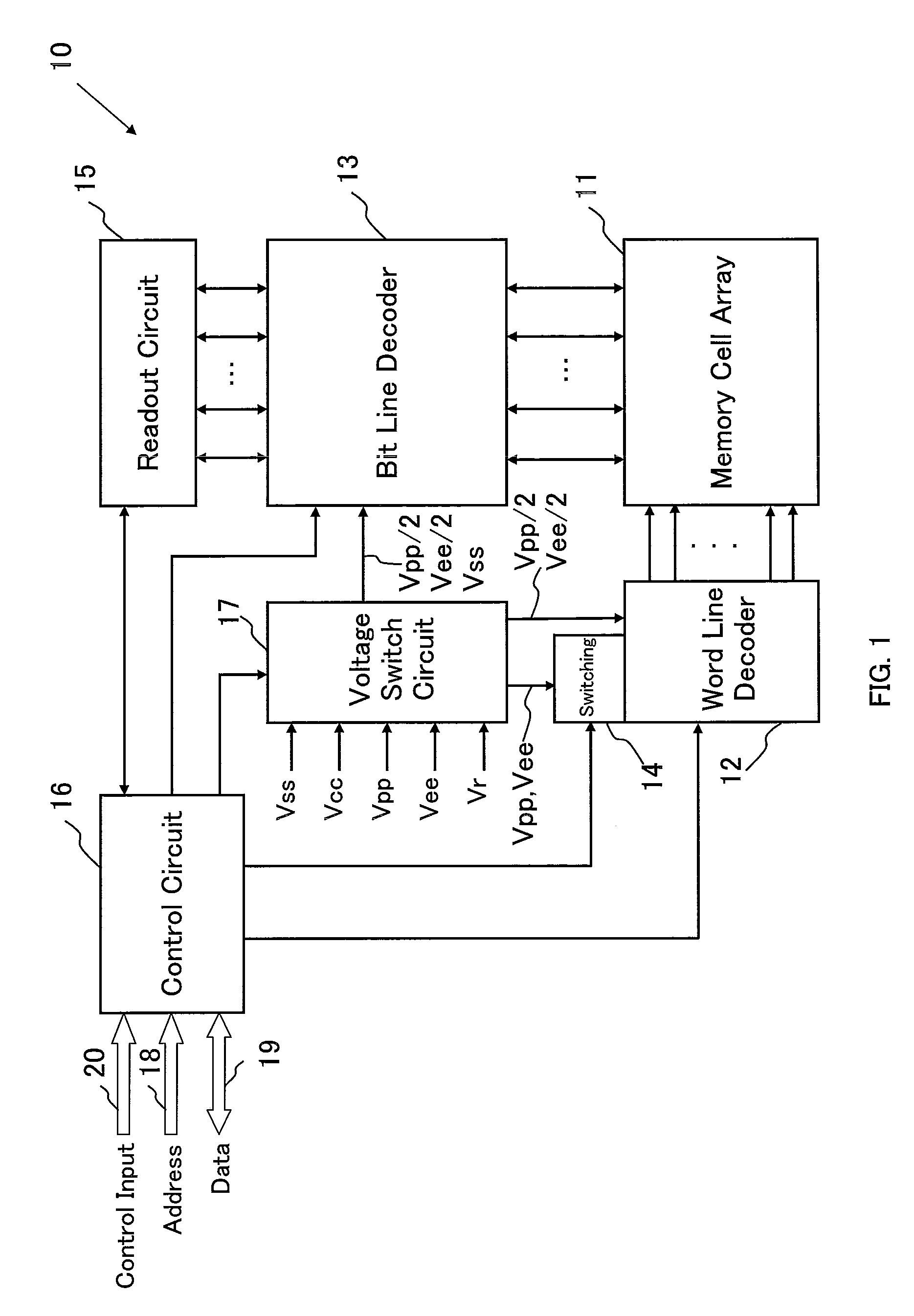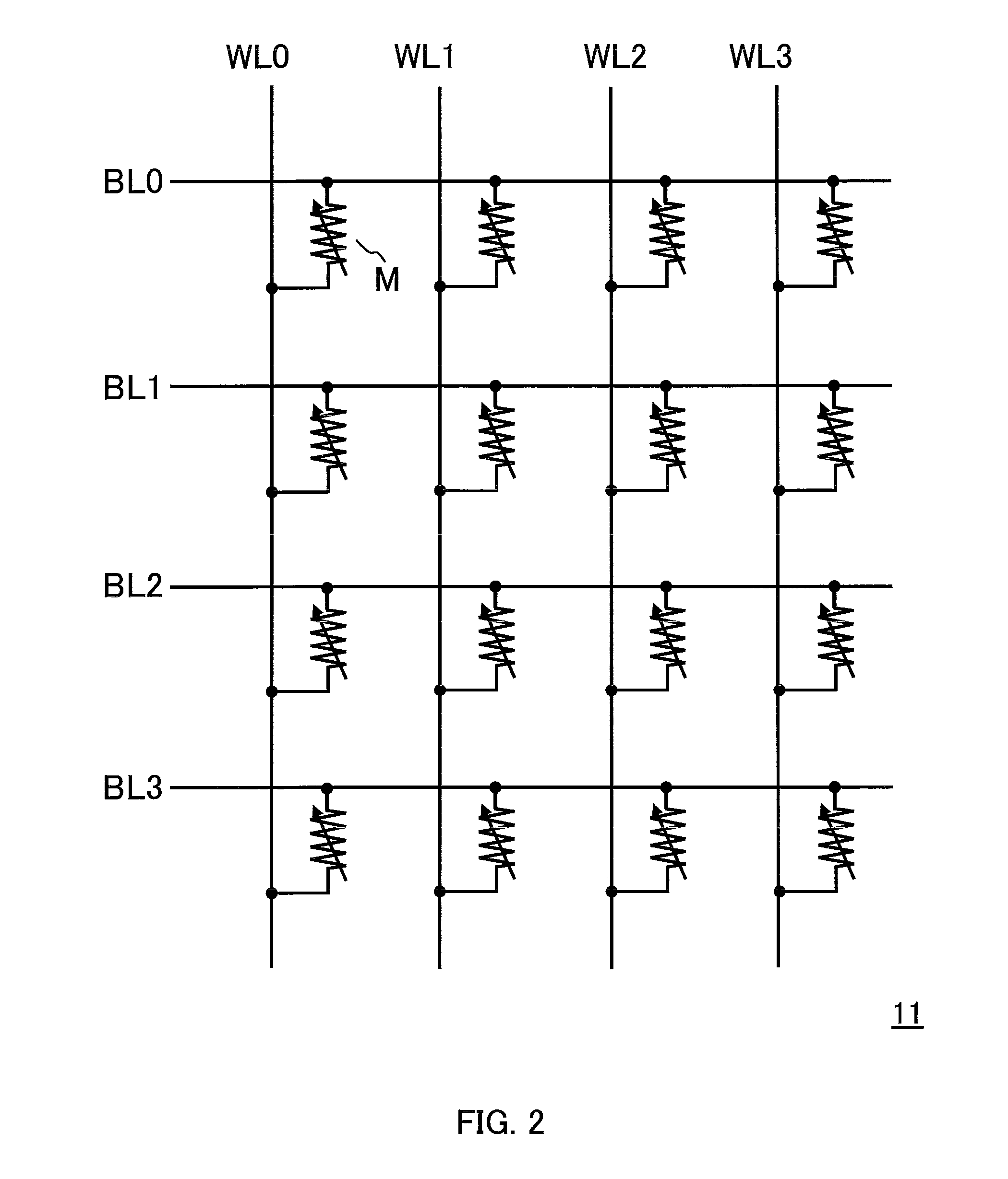Nonvolatile semiconductor memory device
a semiconductor memory and non-volatile technology, applied in semiconductor devices, digital storage, instruments, etc., can solve the problems of inability to implement desired switching operations and unstable oscillation, and achieve the effect of reducing circuit size and reducing writing tim
- Summary
- Abstract
- Description
- Claims
- Application Information
AI Technical Summary
Benefits of technology
Problems solved by technology
Method used
Image
Examples
first embodiment
[0211]A description will be made of a first embodiment (hereinafter occasionally referred to as the “present embodiment”) according to a manufacturing method of the device of the present invention, with reference to FIGS. 20 to 36. FIG. 20 is a schematic view showing a memory cell to be formed in the present embodiment, and FIG. 21 is a plan view showing the memory cell. The device of the present invention manufactured in the present embodiment is configured by a first wiring including a tungsten (W) layer and a TiN adhesive layer, a memory cell portion including a TiN barrier metal, a resistance lowering layer formed of TiN-type polysilicon, a TiN lower electrode, and a TiOxNy variable resistor, and a second wiring including an upper electrode and a tungsten layer. In addition, FIGS. 22 to 32 show the manufacturing method of the present embodiment in the order of steps. In FIGS. 22 to 32, figures A each show a vertical sectional view taken along line X-X′ in FIG. 20, and figures B ...
second embodiment
[0233]A description will be made of a second embodiment (hereinafter occasionally referred to as the “present embodiment”) according to the manufacturing method of the device of the present invention, with reference to FIGS. 37 to 49. FIG. 37 is a schematic view showing a memory cell to be formed in the present embodiment, and FIG. 38 is a plan view showing the memory cell. The device of the present invention to be manufactured in the present embodiment is configured by a first wiring layer including an N+ layer and an N− layer formed in a P-type silicon substrate, a memory cell portion including a TiN lower electrode and a TiON variable resistor, a second wiring including a TiN layer serving as an upper electrode and a adhesive layer, and a W layer. In addition, FIGS. 39 to 46 show the manufacturing method of the present embodiment in the order of steps. In FIGS. 39 to 46, figures A each show a vertical sectional view taken along line X-X′ in FIG. 38, and figures B each show a vert...
third embodiment
[0245]A description will be made of a third embodiment (hereinafter occasionally referred to as the “present embodiment”) according to the manufacturing method of the device of the present invention, with reference to FIGS. 50 to 60. FIG. 50 is a schematic view showing a memory cell formed in the present embodiment, and FIG. 51 is a plan view showing the memory cell. The device of the present invention to be manufactured in the present embodiment is configured by a first wiring including a W layer and a TiN adhesive layer, a memory cell portion including a TiN barrier metal, a TiN-type polysilicon resistance lowering layer, a TiN lower electrode and a TiON variable resistor, and a second wiring including an upper electrode, a adhesive layer and a W layer. In addition, FIGS. 52 to 58 show the manufacturing method of the present embodiment in the order of steps. In FIGS. 52 to 58, figures A each show a vertical sectional view taken along line X-X′ in FIG. 51, and figures B each show a...
PUM
 Login to View More
Login to View More Abstract
Description
Claims
Application Information
 Login to View More
Login to View More - R&D
- Intellectual Property
- Life Sciences
- Materials
- Tech Scout
- Unparalleled Data Quality
- Higher Quality Content
- 60% Fewer Hallucinations
Browse by: Latest US Patents, China's latest patents, Technical Efficacy Thesaurus, Application Domain, Technology Topic, Popular Technical Reports.
© 2025 PatSnap. All rights reserved.Legal|Privacy policy|Modern Slavery Act Transparency Statement|Sitemap|About US| Contact US: help@patsnap.com



